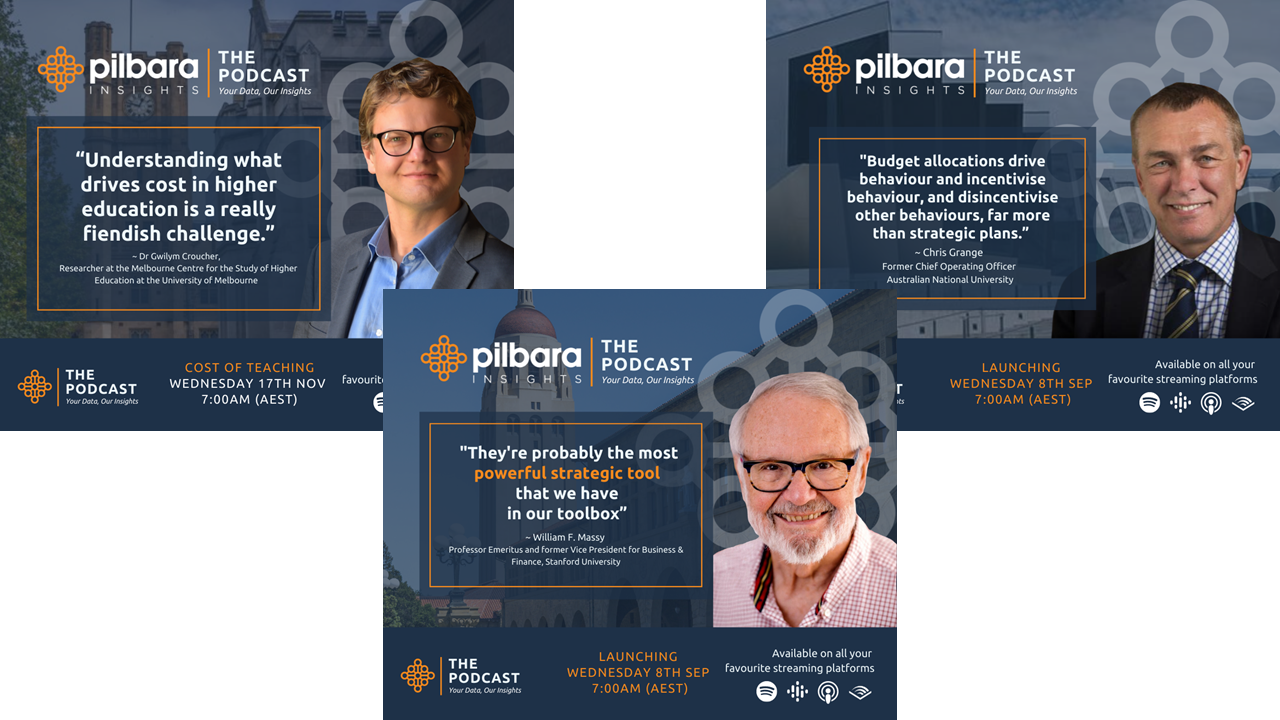
OK, so I’m a little late with my “Best Of 2022” post, given it’s almost the end of January now, but I believe I’m still allowed to say “Happy New Year” as long as I post this in January it’s all good! So, Happy New Year to you all.
I’ve analyzed the data for 2022 and present below, for your reading pleasure, the most listened to podcasts and most read blog posts.
Podcasts
The Cost of Teaching Podcast was, by far, the number one listened to podcast globally. Since reporting the cost of teaching is mandatory in Australia, I thought that’s where the majority of downloads would have come from, but it was actually the US. In this podcast we discuss the factors that contribute to cost of teaching at institutes of higher education in Australia. Dr Gwilym Croucher from the Melbourne Centre for the Study of Higher Education at the University of Melbourne analyzed a large amount of detailed data from 11 universities using our cost models and considered a range of variables and factors such as: metro vs regional, large vs small, class sizes etc. This project resulted in a final whitepaper that was produced by MCSHE and Pilbara.
This interview with Emeritus Professor Bill Massy (Stanford University) introduces the listener to the concept of Academic Resource Management. We discuss why it’s essential to today’s universities and colleges and what crucial information you may be missing to lead your institution towards a sustainable future.
In this interview with Chris Grange (Former COO of the Australian National University), we discuss two main types of budgeting, incremental and responsibility centered management, the advantages and disadvantages of each type, their relationship with strategic planning and which type tends to work better in a downturn.
Blogs
Activity-Based Costing Software Top 4 ‘Must Haves’
This was a bit of a surprise because it’s quite an old blog post. I suspect this is due to the fact that global economic conditions are returning to what they were in the 70s/80s/90s with higher inflation and higher interest rates. This was also the same time ABC was used extensively, when organizations had to focus on cost control and profitability rather than growth at any cost, which is exactly the same situation now.
In this blog post we discuss the top pieces of functionality required in ABC Software, which includes:
- The ability to report on not only the beginning and end of your model (the inputs and outputs), but all stages in-between.
- The ability to track multiple cost types through the model.
- The ability to automate as much of the model allocation and maintenance as possible; and
- being able to link your model to not only Microsoft Excel but also to software that provides visual analytics with intuitive report creation, like Power BI.
The Annual Higher Ed Budgeting Process is Broken!
This post examines the issues with the traditional budgeting process which is “…often scorned as being obsolete soon after it is produced”, key points in the article are:
- The annual budgeting process is broken but can be fixed using centuries old techniques.
- Using demand for products/services to create budgets, not last year’s budget as a baseline.
- The critical component is to properly calculate fully-burdened Unit Costs.
- The budgeting process can be changed in stages, starting with Academic Program financial forecasts.
- It’s important to fix now, because budgets drive change more than strategic plans, and Higher Ed needs to change to address all of the current challenges it faces.
Managing in a period of Stagflation
Now this is aligned with my previous thinking, that mindsets are changing due to the current economic conditions, moving from a growth mindset to a cost management and profitability mindset. So how do organizations manage themselves in a period of stagflation? Some key points from the post are:
- High Inflation hasn’t been around since the 70’s and 80’s.
- During periods of high inflation focus on defending margins and cashflow.
- This requires sophisticated and detailed Activity-Based Cost models (which were prolific in the 80’s and 90’s).
- Activity-Based Cost models have improved significantly since the 80’s and 90’s.
- Use Predictive Cost models to forecast various scenarios – For Higher Ed this includes changes in student numbers, class sizes and forecasted inflation rates up to 10 years into the future.
So, the underlying theme to the top podcasts and blog posts is COST and in particular Cost Management. Funnily enough the latest article I read in the Wall Street Journal, reporting on Davos 2023 was titled “Profitability moves to centre stage at Davos”, rather than growth at any cost. So, cost management and profitability management are high priorities but so too is combating climate change. Can organizations be greener and profitable? I say Yes! As long as you have the data and model to make the appropriate strategic and operational decisions. It’s the same for Not-For-Profit organizations, like Colleges and Universities. Can you transition to a greener business model in a financially sustainable way? Again, I say Yes! So we’ll explore this further in my next blog post.